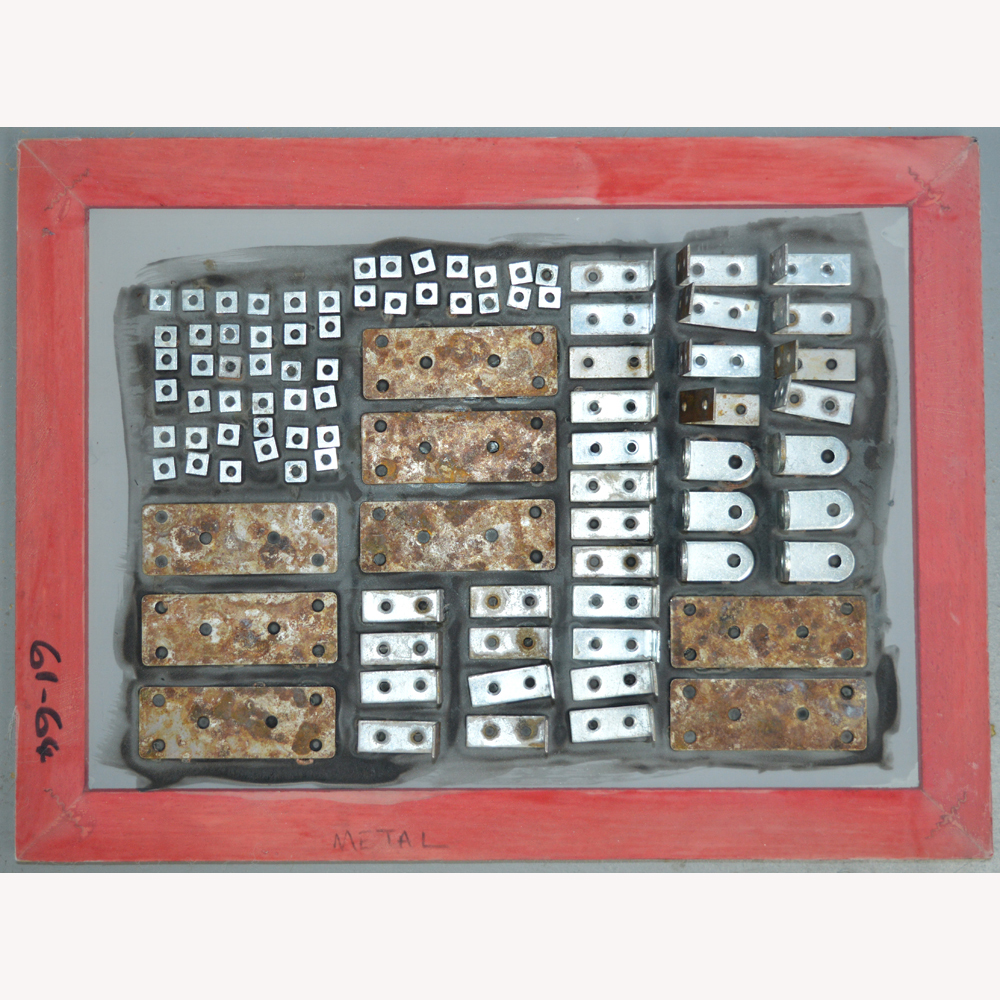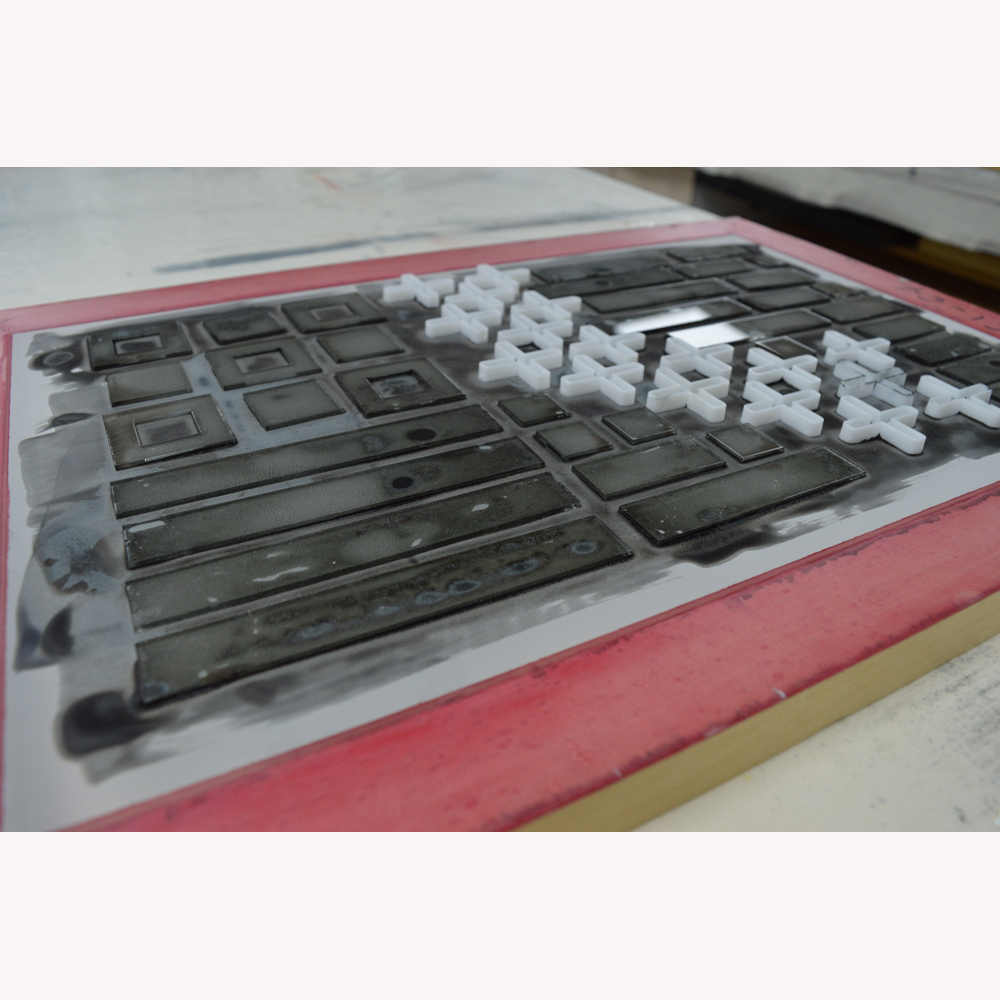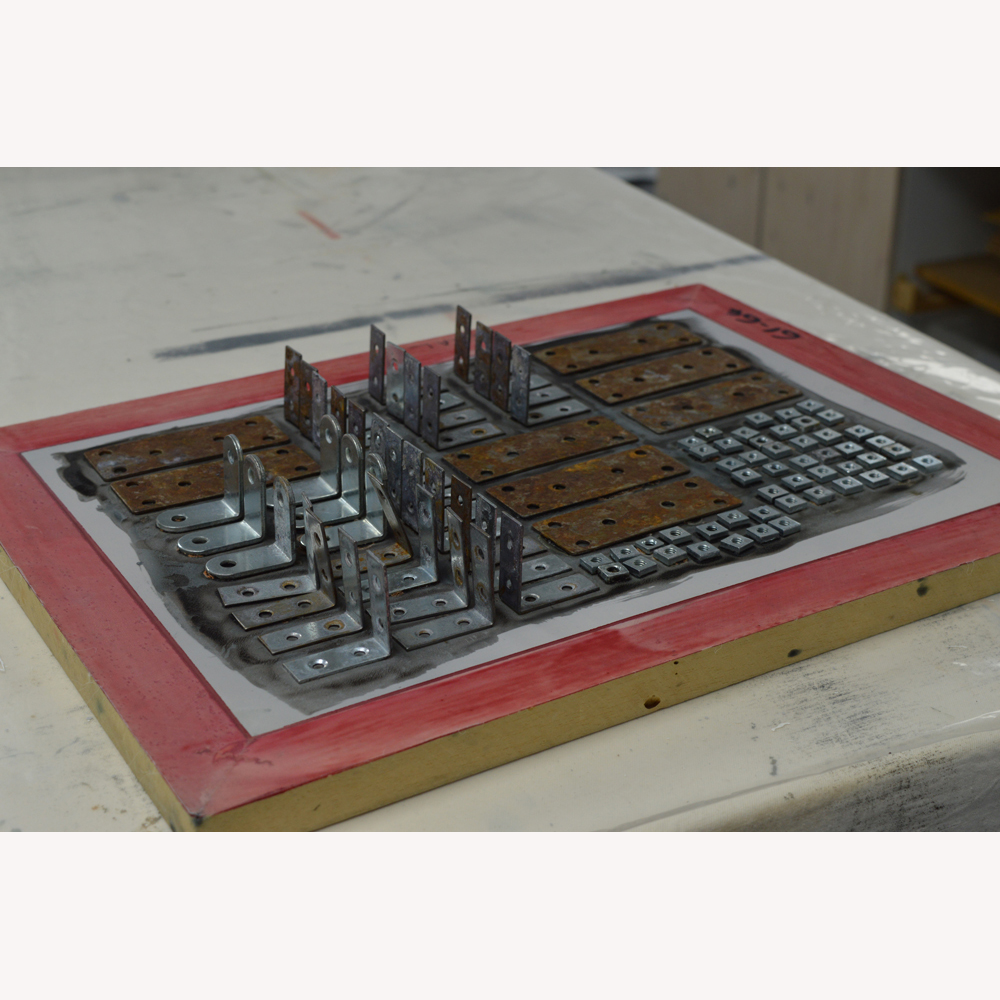Well the last week or so has been a bit of a rollercoaster. The nervous euphoria of my exhibition preview last weekend followed by a somewhat deflated feeling the next day was easy to put behind me as I have so much work to complete before my next exhibition. But then I had two rejections during the week. The piece rejected by Quilt Visions (23 Kilns, above) was one I made using more of a 'monoprint' style of breakdown printing that I really, really want to explore further over the next year or two. I thought it was good, I love the graphic nature of it so rejection was a bit worrying. Until I saw that they had only selected 43 pieces out of 343 entrants. I didn't feel so bad.
The other rejection was from the European Quilt Triennial. Second time I've entered and second time I've been rejected. The piece is called the Cost of Coal (detail below) and is a companion piece to a large quilt that has got lots of positive comments from visitors to mine and Helen Conway's exhibition. But, being quite pale, it is difficult to photograph which makes me wonder whether this and any further pieces I make in the Traces series will be difficult to get accepted into exhibitions. Which has shaken my self-confidence as I was planning to take this series further. Should I keep going? Have I backed myself into an artistic corner? Should I just make more Ruins pieces which have been a very successful series for me?
It is very, very tempting to wallow in self-pity and self-doubt and reach for the gin but that isn't really an option when I need to work at a steady pace for the exhibition in Stockport at the end of May. In fact it isn't really an option I would let myself take at any time. It has been a while since I mentioned Steven Pressfield in a post but this week I felt the need to pick up my dog eared copies of his book's 'The War of Art' and 'Do The Work' again. Yes they are a bit 'preachy' and maybe too full on 'American' for many but his approach is part of my studio / art practice. He talks about the resistance - all those things which get in the way of us making the art we want to make. Rejection letters are part of the resistance. As are acceptance letters. They both elicit emotions which distract us. Pressfield talks about turning pro and about treating art as if it were your paid job. To paraphrase - show up every day, show up no matter what, stay on the job all day, be committed to the long haul, understand that the stakes are high and real, accept remuneration for our labour, don't over identify with our job, master the techniques of our job, have a sense of humour about our jobs and accept both praise and criticism as part of our jobs. Of course very few of us can make art full time. I commit to 20 hours a week in my studio. I get there by going into my studio virtually every day even if it is 30 minutes squeezed between my other commitments. I turn up when I feel ill (full of a cold as I type!). I turn up when the sun shines. I turn up when it is dark and wet and cold. I am 100% committed. This matters to me. I don't let rejection paralyse me (it is a specific piece of art that gets rejected not me as an artist). I just keep doing the work.




























